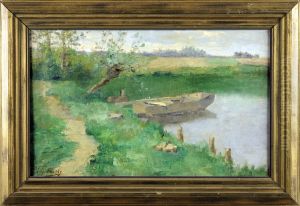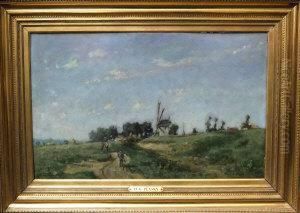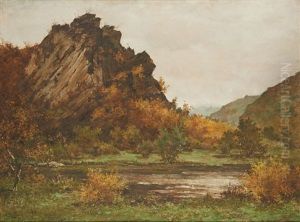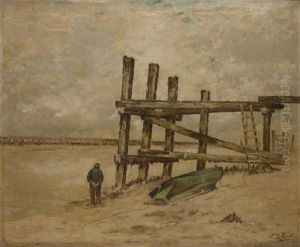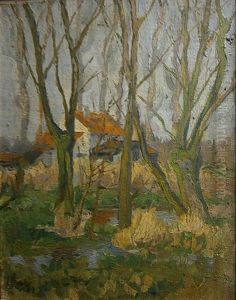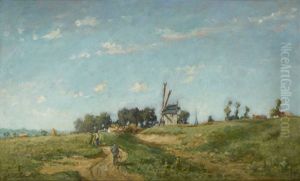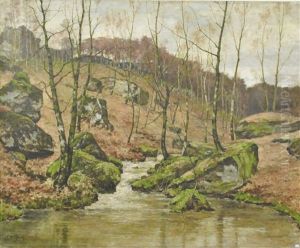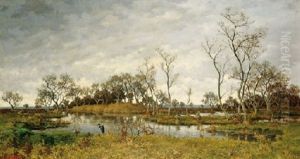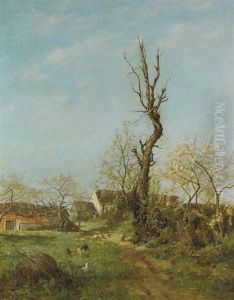Eugene Plasky Paintings
Eugène Plasky was a Belgian painter born on December 23, 1851, in Schaerbeek, which is now a part of Brussels, Belgium. Plasky is most well-known for his genre scenes, landscapes, and portraits. His work reflects the influence of the Belgian Realist school, which sought to depict everyday life with sincerity and attention to detail.
Plasky received his artistic training at the Académie Royale des Beaux-Arts in Brussels, where many prominent Belgian artists of the time were educated. His teachers, who were key figures in the Belgian art scene, greatly influenced his early work. Plasky's style evolved over time, incorporating elements of Impressionism, which was gaining popularity during his lifetime. He became adept at using light and color to evoke mood and atmosphere in his paintings.
Despite his talent and the quality of his work, Plasky did not gain the same level of international fame as some of his contemporaries. However, he was well-respected within the Belgian art community and participated in several exhibitions. Throughout his career, Plasky remained dedicated to his art, creating works that captured the essence of Belgian life in the late 19th century.
Eugène Plasky’s artistic legacy is preserved through his paintings, which remain in private collections and museums in Belgium. His contribution to Belgian art is also recognized in the naming of a street in Schaerbeek, where he was born. Plasky passed away on October 31, 1905, in Schaerbeek, leaving behind a body of work that continues to be appreciated by art enthusiasts and historians for its reflection of Belgian culture and society at the turn of the 20th century.
